
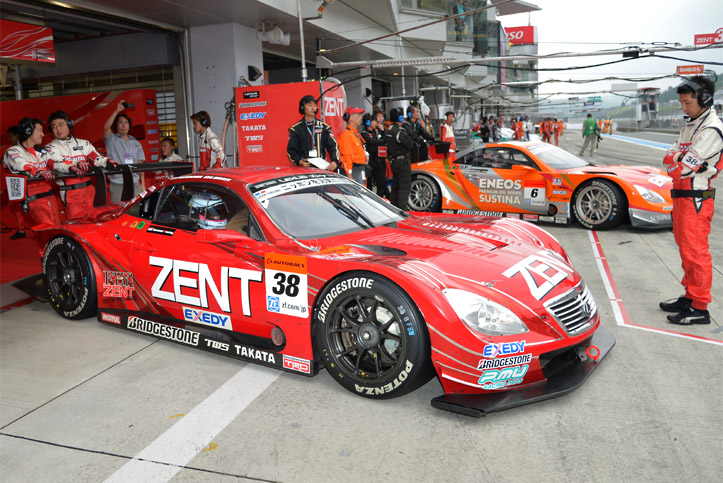
OFF SEASON SPECIAL -3-
Consistent speed throughout the season. Barely no change on the outside.
The third edition of this exercise to look back the SUPER GT machines before the 2014 season start will take up the 2013 GT500 class champion car LEXUS SC430. SC430 has not only achieved the title but it scored four wins out of eight races, making it the winningest car with a winning percentage of 50%.
In line with the theory of a strong car does not change, no significant modification was made on the overall appearance of 2013-model SC430 throughout the year compared to GT-R or HSV-010 GT, which the manufacturers had tried many things during the season, except some minor changes made to suit the circuit layout or to meet the preferences of driver or team. As a TRD engineer who was in charge of development said, “There were no drastic changes in the aerodynamics or suspensions. We focused on continuous improvement around the power train, which was our issue last year (2013),” it seems that the manufacturer’s decision on the aerodynamics was to improve further the drivability based on the previous year. It was also revealed that there were some aerodynamics parts brought in in the middle of season but unnoticeable from outside.
Bodywork
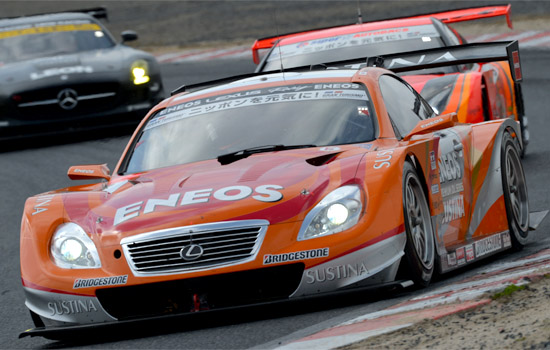
Rd.1 OKAYAMA No.6 ENEOS SUSTINA SC430
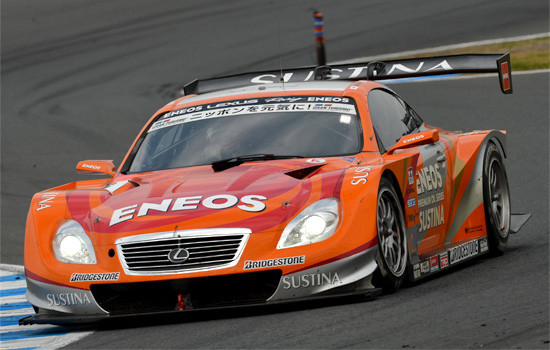
Rd.8 MOTEGI No.6 ENEOS SUSTINA SC430
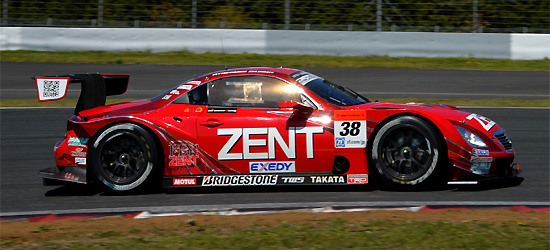
Rd.2 FUJI No.38 ZENT CERUMO SC430
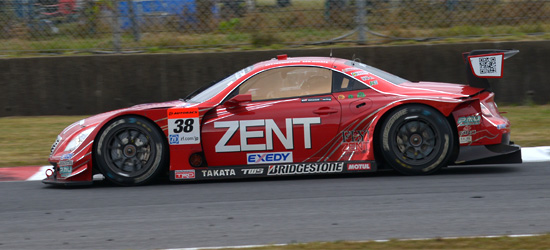
Rd.7 AUTOPOLIS No.38 ZENT CERUMO SC430
In the previous two editions, we looked closely into the detail first and then the overall, but this time we will start from the high-level. You probably cannot tell the difference from what you see of No.6 ENEOS SUSTINA SC430 at the season opener at Okayama and the final round at Motegi. The side views of No.38 ZENT CERUMO SC430 at Round 2 Fuji and Round 7 Autopolis are almost the same too. Only difference could be the duct installed on the roof to let the air into the inside of car as a measure against the heat. It is impossible to identify the difference in aerodynamics parts from this photo.
As the aerodynamics performance reaches the highest maturity, the bodyworks usually would start to look alike even if being different models of car. However, SC430 maintained its unique visual characteristics that are different from GT-R or HSV-010 GT, which are the following three points: 1) there are no slits on the side of front fender behind the tires, 2) the back of rear fender is not completely covered and there are vertical slits on the body behind the tires, and 3) the door mirrors are smaller and do not have an aerodynamic shape.
Front bumper
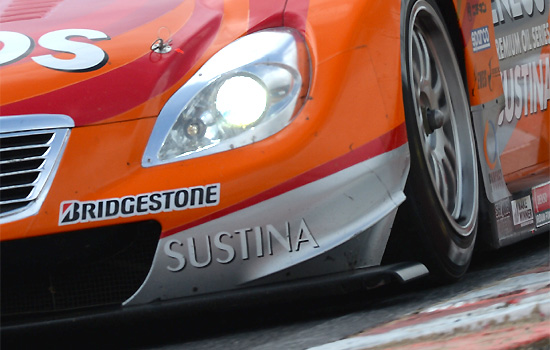
Rd.1 OKAYAMA No.6 ENEOS SUSTINA SC430
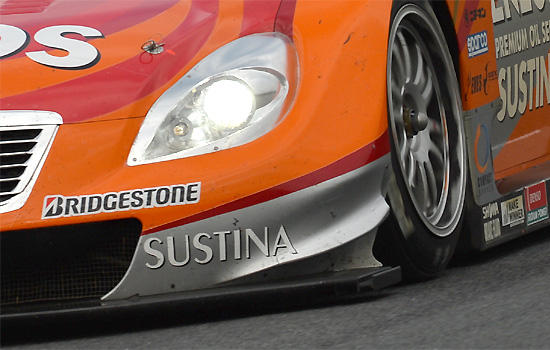
Rd.8 MOTEGI No.6 ENEOS SUSTINA SC430
Most noticeable (no matter how small) change in the appearance of the 2013-model SC430 would be the canards (small wing) installed on both sides of front bumper. It was relatively small at the season opener, but the canards put on the car at the final round stretched out a little wider. Also, it seemed that a team could choose the one without canards depending on the track or session.
Front spoiler
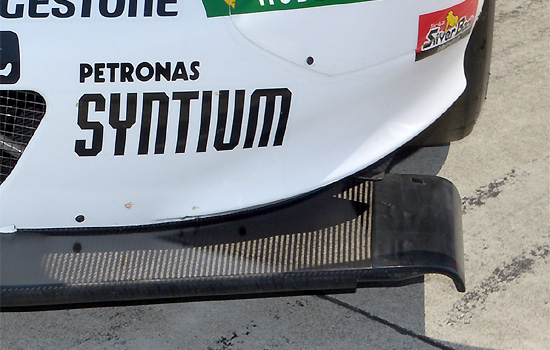
Rd.2 FUJI No.36 PETRONAS TOM'S SC430
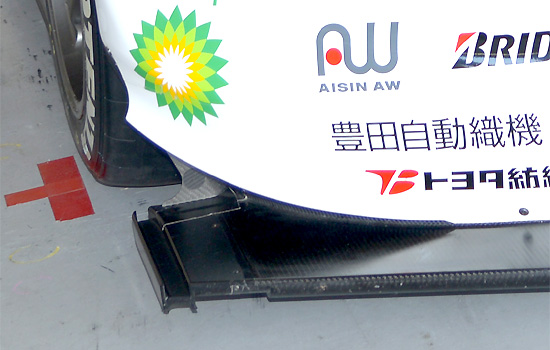
Rd.5 SUZUKA No.39 DENSO KOBELCO SC430
It's hard to tell if you were just looking at it, but what the development team of SC430 particularly focused in improvement was the shape of both ends of front spoiler. From the season opener to Round 3 Sepang the ends were round and bent downward, but from Round 4 and on they were straightened with H-shaped parts at the tip. It may not be a huge effect, but it is believed to be effective in improving the handling, which was an issue last season, by increasing the downforce.
Rear wing stay
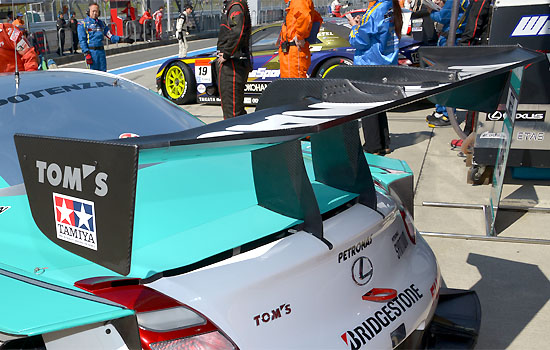
Rd.2 FUJI No.36 PETRONAS TOM'S SC430
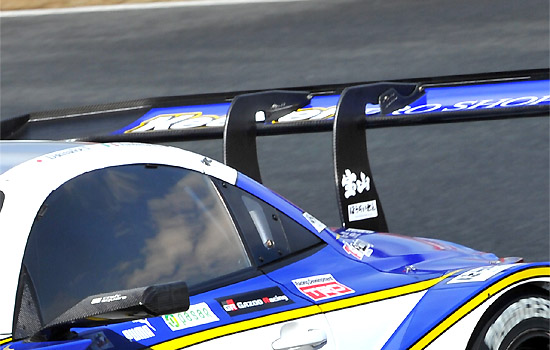
Rd.1 OKAYAMA No.37 KeePer TOM'S SC430
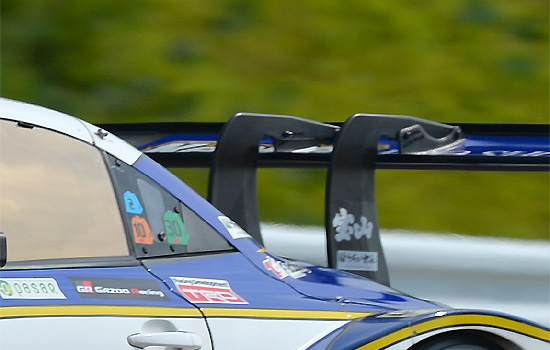
Rd.5 SUZUKA No.37 KeePer TOM'S SC430
SC430 pioneered the "Swan neck" rear wing stay in 2011. It realizes high downforce/low drag by efficiently letting the air flow underneath the wing. The wing on No.36 PETRONAS TOM'S SC430 at Round 2 Fuji was flattened to maximum that there was barely any space between the upper surface of the wing and the stay. On the other hand, the rear wing on No.37 KeePer TOM'S SC430 was at about the same angle at both Round 1 Okayama and Round 5 Suzuka. Surprisingly, the wing was not raised up even at the technical circuit of Okayama. This could be where the SC430 has advantage.
Rooftop intake vent
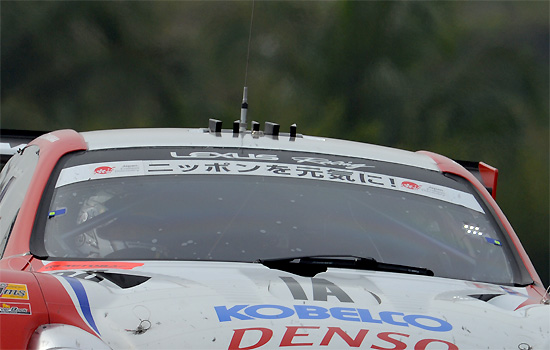
Rd.3 SEPANG No.39 DENSO KOBELCO SC430
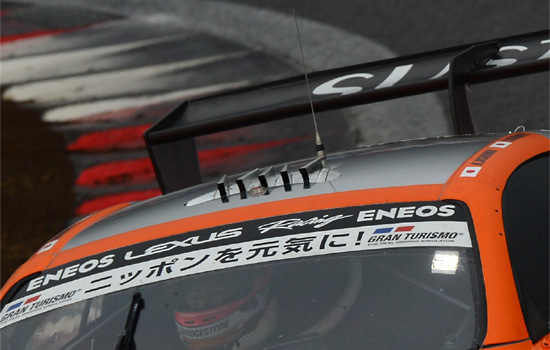
Rd.6 FUJI No.6 ENEOS SUSTINA SC430
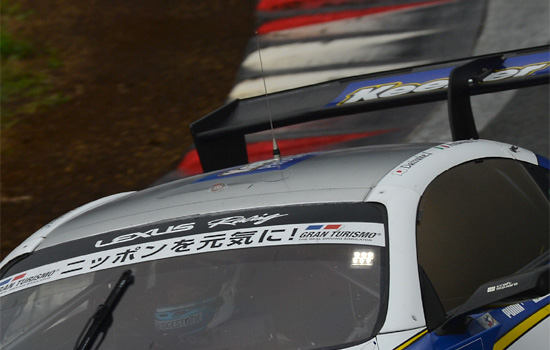
Rd.6 FUJI No.37 KeePer TOM'S SC430
Duct that drew air into the inside of car from the rooftop to cool down the cockpit was used at a race in hot weather like Round 3 Sepang and Round 5 Suzuka 1000km race. At Round 6 Fuji held in September, No.6 ENEOS SUSTINA SC430 used it and No.37 KeePer TOM'S SC430 didn't, so it was different by team.
| 4/13-14 | Round1 OKAYAMA | |
| 5/03-04 | Round2 FUJI | |
| 6/01-02 | Round3 SUZUKA | |
| 8/03-04 | Round4 FUJI | |
| 8/31-9/01 | Round5 SUZUKA | |
| 9/21-22 | Round6 SUGO | |
| 10/19-20 | Round7 AUTOPOLIS | |
| 11/02-03 | Round8 MOTEGI |